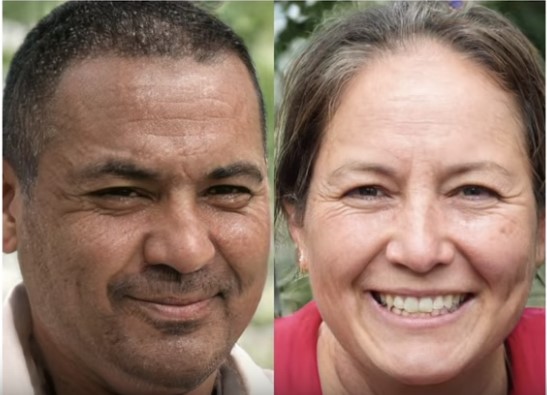How would you feel if a video of you appeared
online, saying things that you never actually said? While you may not be the
one targeted by this kind of action, this situation is very real, thanks to a
relatively recent development in machine learning and artificial intelligence.
Known as “deepfakes,” these videos have made it crucial to examine media from a
place of skepticism.
What is a Deepfake, and How Are
They Made?
A deepfake is a fabricated video that makes it
possible to literally put words in someone’s mouth. As demonstrated by multiple
research teams, while this technology is not yet perfect, it can be used to
create a very convincing video - or an even more convincing still shot.
Deepfakes can be made using a combination of
techniques and tools.
Video Deepfakes
Using a specialized software solution, a video
is scanned to identify the phenomes (the different sounds that make up full
words) that are vocalized. Once they are identified, the phenomes are matched
with the facial expressions that produce those sounds (also known as visemes).
A 3D model of the subject’s face is then built based on the original video.
With the right software solution, these three
factors can be combined with a transcript to create new footage and superimpose
it over the original, making it appear that the person depicted is saying
something that they never said. This creates a video that is just different
enough to be disconcerting.
A similar method, that relies on mapping the
expressions a person makes in source footage and applying them to a second
person’s face, can even be used to bring paintings and old photographs to life.
Still Image Deepfakes
While the still images of people that were
produced by AI were initially low-quality and generally unconvincing back in
2014, today’s - just five short years later - are effectively indistinguishable
from the real deal. This is thanks to a technique known as a generative
adversarial network. Using this technique, one AI generates images of people’s
faces, anticipating feedback on how it did. In order to reach the desired level
of photo-realism, it could potentially take millions of repetitions - something
that nobody has time for.
Instead of subjecting a human being to the process of critiquing millions of
images, a second AI is used to guess whether the picture was actually created
by the first AI, or is a legitimate picture. While neither is particularly
effective when first starting out, they swiftly improve in their capabilities
over time, and can soon make images that are effectively indistinguishable from
actual photographs of real people.

Neither of the people pictured here actually
exist - they were instead created by NVIDIA in one of their machine learning AI
initiatives.
As a result, we can see a dramatic rise in the
capability for people to spread falsehoods and generally make the Internet a
misinformative place.
How Misinformative?
Let’s look at a relatively recent example of
how impactful altered video can be. In May of this year, video of House Speaker
Nancy Pelosi blew up on social media that made her appear to be making a speech
while intoxicated. Edited to make her sound as though her words were slurred,
the original footage had been reduced to 75 percent of its original speed, with
the Speaker’s voice adjusted to make it sound more like her natural pitch. This
wasn’t the only instance of this happening, either. In addition to this speech,
originally delivered at an event for the Center of American Progress, Pelosi’s
voice was also manipulated to make her, again, appear drunk as she spoke to the
American Road & Transportation Builders Association earlier in May. A
similar claim was made in yet another video posted last year.
Regardless of your political views, it cannot
be denied that this kind of activity is dangerous. While there have not yet
been deepfakes deployed as a part of a disinformation campaign, the Director of
National Intelligence Dan Coats alerted Congress to the possibility that
America’s rivals could leverage them in the future.
Take, for example, this practical
demonstration provided in a TED Talk by Google engineer Supasorn Suwajanakorn.
Using footage of President George W. Bush, Suwajanakorn was able to create maps
of assorted public figures and celebrities and have them speak on his behalf.
He was also able to create four different models of President Barack Obama,
that all appeared to make an identical speech.
Now, Suwajanakorn is working on a browser
plugin to help natively identify deepfake videos and stop the spread of
disinformation.
How Could This Impact Your
Business?
Sure, global politics and pop culture are
significant to many people, but how much of a threat could it really be to your
business? Unfortunately, it may not be long before it could have a significant
impact upon you.
Let’s say you have a customer or client who,
for whatever reason, left your services feeling disgruntled. Someday soon
enough, deepfake technology could be accessible enough for them to leverage it
as part of a smear campaign against you and your company. Consider Speaker
Pelosi’s ongoing struggle with people using rudimentary deepfakes to discredit
her. Do you want similar efforts to be leveraged against you, where you are
misquoted or misrepresented, whenever this technology becomes widespread?
Probably not.
In the meantime, there are plenty of other threats that you also have to contend with that could easily damage your business and its reputation just as much as some fabricated video footage could. Emerge can help to protect your operations from these threats. Give us a call at 859-746-1030 to learn more about what we have to offer.
